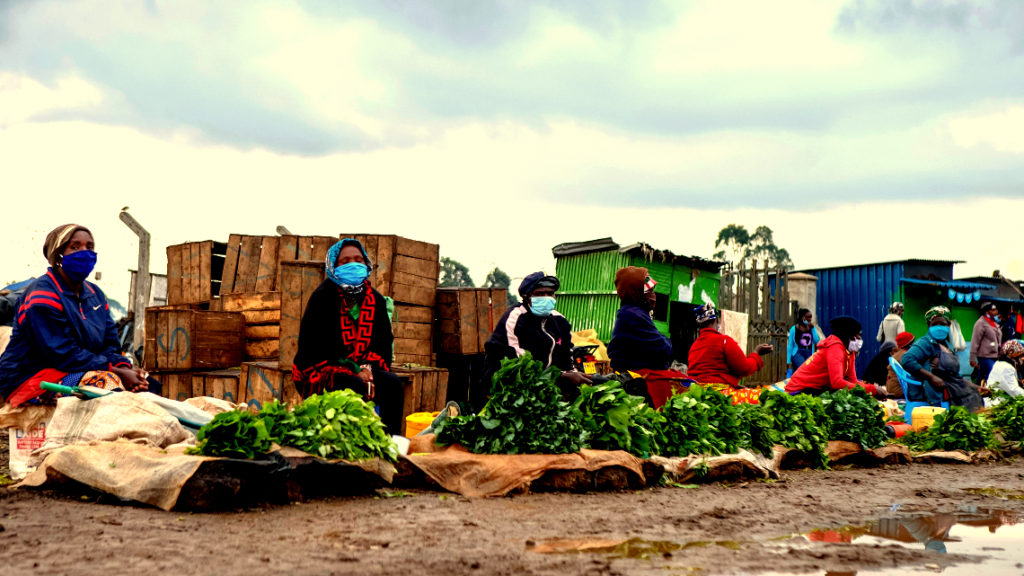Leveraging the AfCFTA to accelerate post-COVID-19 digital industrialisation for African MSMEs
Micro, small, and medium enterprises (MSMEs) in Africa have been particularly vulnerable to the economic impacts of the COVID-19 pandemic, with demand for their products and services declining since the outbreak in late 2019. A recent African Union report that surveyed African SMEs about COVID-19’s impact on their businesses reported that the pandemic had heavily impacted 93% of businesses, while 95% of them did not receive any form of government support to cushion the impacts of the economic downturn. In a survey of MSMEs in Nigeria by the Centre for the Study of the Economies of Africa (CSEA), 69% of respondents said the pandemic had significantly affected their access to finance, capital and financial liquidity. Total direct output loss accruing to Nigerian MSMEs in the year 2020 was estimated at about NGN5.8 trillion (U$D 14.85 billion).
At the same time, the COVID-19 crisis has accelerated the adoption of digital technologies across the world. The lockdown restrictions created a rare opportunity for many MSMEs and households to engage with digital technologies, allowing businesses to stay operational and access new markets. Unfortunately, given the enormous digital divide in terms of skills and infrastructure, the benefits of this digitalisation have been unevenly distributed.
Digitalisation and COVID-19 recovery
MSMEs play an essential role in the overall growth of the industrial economy of Africa. They constitute about 95% of African businesses and contribute 80% of regional employment. Therefore, they are a vital industry for inclusive socio-economic development. The rapid migration to digital technologies as a result of COVID-19 has continued into the recovery phase in Africa, and augmenting MSMEs’ capacity and ability to keep pace with the new digital expectations that have emerged will be critical to driving COVID-19 recovery on the continent. However, only a few MSMEs capable of navigating and integrating into digital platforms may survive the prolonged effects of the crisis. Many firms are not capable of embracing digital initiatives, particularly in the informal sector. Differences in technological, social and networking capabilities further exacerbate the digital divide.
Digitalisation’s potential contributions to MSME survival include wider customer reach, cost reduction, and opportunities to optimise products, sales and revenue. Social media platforms such as Facebook and Instagram are now being used to interface directly with customers and effectively acquire new ones. MSMEs should efficiently market their products and services for social media platforms, which have an estimated user base of over two billion users, while reducing traditional overhead costs and technically reducing the distance between MSMEs and their customers. MSMEs can also leverage digital innovations for survival by restructuring their enterprise towards remote working, migrating to e-commerce and reorganising their production lines towards goods and services with higher demand.
Beyond COVID-19, however, digitalisation provides the opportunity for MSMEs to leverage the benefits of the recently implemented African Continental Free Trade Area (AfCFTA). Symbiotically, the AfCFTA delivers a channel for the region's fragmented countries to band together to seek alternative paths to development by harnessing combined strengths and resources to support digitalisation.
"There is a concern about whether the AfCFTA will ensure an equitable spread of digitalisation gains. This will depend on how it responds to competition, antitrust and cross border taxation arising from the digital economy."
Leveraging the AfCFTA
While more than 500 million Africans (39% of the total population) are connected to the internet, the spread and scope of digitalisation have not translated to economic development and structural transformation on the continent. One reason for this is the small economic size of many African countries and their fragmented nature. Individually, most African countries lack the economies of scale and investment capacity needed to drive down costs and mobilise mass adoption. This also partly explains the weak and uneven development of domestic digital platforms in Africa. Regional integration can alleviate these problems by promoting investment in aids to trade, of which digital technology is a key component. With the AfCFTA, the continent becomes a single market, thereby diminishing economic size and fragmentation issues.
Regional integration also has the potential to resolve another constraint to widespread digitalisation in Africa: citizens’ weariness of the potential abuse of digital platforms for surveillance and restrictions on their constitutional rights. Given the role social media played in the Arab Spring, there have been many attempts by African states to shut down the internet or control access to the digital space in response to protests or dissent. In 2019, about 25 cases of partial or total internet shutdowns were documented in Africa, representing a 47% increase from 2018. Given this trend, expansion in digital footprints like digital identification systems and facial recognition has faced scepticisms and outright rejection from citizens and civil society. Regional integration can help in this regard. The uniform data governance that is likely to ensue within the free trade area will separate business cases for digitalisation from the political ones. Moreover, regional integration will make it economically costly for states to arbitrarily shut down the internet, as this will have broader continental effects.
However, for the benefits of AfCFTA to accrue inclusively, it is essential to narrow the uneven development of digitalisation in Africa. Some of the recent growth in domestic digital platforms in African has been concentrated in a few relatively rich countries like Nigeria, South Africa and Kenya. Therefore, there is a concern about whether the AfCFTA will ensure an equitable spread of digitalisation gains. This will depend on how it responds to competition, antitrust and cross border taxation arising from the digital economy.
Supporting digitalisation of MSMEs
National governments at both the federal and state level can enhance the digital capabilities of MSMEs by promoting programs that facilitate the adoption and use of digital technologies. Governments, the private sector and the civil society need to collaborate and facilitate knowledge flows that contribute to building and strengthening a systemic digital change. The first steps would be to identify the gaps that hinder digital take-up and provide context-specific solutions that bridge the identified gaps. While the priority of crucial challenges will differ by country, the following policy measures must be pursued cross-nationally:
● Digital skills training: Digital literacy skills are fundamental to achieving digitalisation. There needs to be an intentional effort to prepare current and future business owners to succeed in this changing landscape. This includes training that provides MSMEs with a holistic understanding of digitalisation and equips them to actively and fully engage in it. Particular attention should also be paid to tailoring programs to the needs of women and girls.
● Provide infrastructural support: It will be critical to promote technology-enabled interventions that facilitate access to mobile phones, tablets and computers that enable MSMEs to adopt and access digitalisation. Policymakers will need to back this up with complementary investments in physical infrastructures, such as improved electricity supply and support for software development and assembly of ICT equipment and accessories. It is also imperative to extend improved internet connectivity to rural areas and underserved population.
● Reduced cost of digitalisation: Many businesses are already faced with devastating financial consequences of the COVID-19 pandemic. As MSMEs will incur expenses as they digitally transform their businesses, they should be encouraged and incentivised to start with low-cost pilots and little resources that can be scaled up. A recent survey of 45 African countries shows that only 10 countries meet the standard of affordable internet, defined as paying 2% or less than the average monthly income for 1 gigabyte (GB) of data. It is critical to align the costs of digitalisation with the ability of Africans to afford it. Such a reduction in the costs of digitalisation could come through crisis-response partnerships with telecommunications providers. For example, lower data costs could encourage MSMEs to participate in online digital literacy and migrate to e-commerce. Other African countries should embrace the success models of Kenya and Nigeria. Through the internet exchange gateway, the Kenya Internet exchange points (KIXP) grew from carrying peak traffic of 1 Gigabit per second (Gbps) in 2012 to 19 Gbps in 2020. The Internet Exchange Point of Nigeria (IXPN) grew from carrying 300 Megabits per second (Mbps) to peak traffic of 125 Gbps in 2020, bringing a cost savings of US$ 40 million per year.
● Improve Public-Private Partnerships (PPP): It is imperative to strengthen public-private partnerships, particularly in the financial and telecommunications sectors, in delivering the needed interventions. Governments and private technology firms could pull resources and technical know-how to make internet data and ICT facilities affordable, which could be a cornerstone for MSMEs to adopt and utilise digitalisation. Such public-private partnerships hold the key to the future development of MSMEs by enhancing digital literacy among MSMEs, reskilling and upskilling their potentials to compete effectively in AfCFTA. Morocco has exhibited an excellent PPP model for digital transformation through its 2020 Digital Strategy, prioritising the development of e-government services.
Digitalisation can support African MSMEs to emerge from the COVID-19 crisis stronger with an unparalleled global competitive advantage when adopted and applied efficiently through the AfCFTA. Therefore, it is time for governments and policymakers to prioritise long-overdue reforms in African business regulations, skills development schemes and public sector governance.
This article was first published on the African Portal


 English
English
 Arab
Arab
 Deutsch
Deutsch
 Português
Português
 China
China







